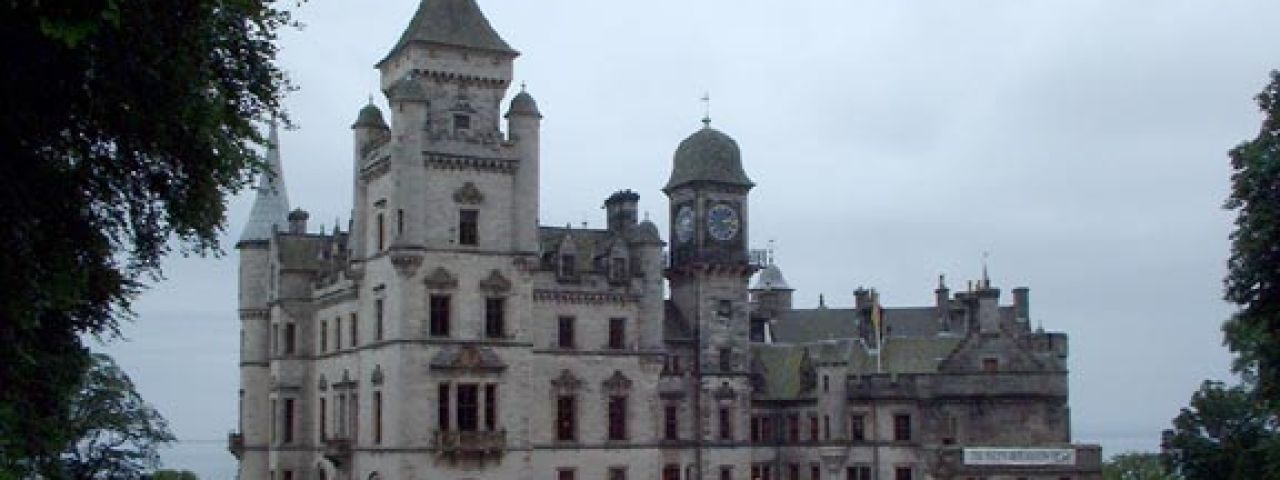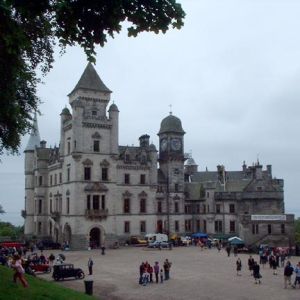Dunrobin Castle & Gardens
Sightseeing attraction | Golspie | Scotland | United Kingdom
History of Dunrobin Castle
Dunrobin Castle & Gardens - A fairytale castle on the Scottish North Coast
Dunrobin Castle garden architecture
Dunrobin Castle is one of the most impressive castles in Scotland, located on the picturesque North Sea coast near Golspie in the Scottish Highlands. With its elegant towers, magnificent gardens, and rich history, it attracts visitors from all over the world. The castle has been the seat of the Clan Sutherland for centuries and is considered one of the oldest continuously inhabited mansions in Scotland.
Scottish history and culture
History of Dunrobin Castle
The origins of Dunrobin Castle date back to the early 13th century when it was built as a simple fortress for the Earls of Sutherland. The name "Dunrobin" comes from Gaelic and means "Robin's Hill," possibly referring to an early clan leader. Over the centuries, the castle was rebuilt and expanded several times, until it received its current fairytale appearance in the 19th century under the influence of French architecture.
Falconry demonstrations at Dunrobin Castle
The renovation was led by Sir Charles Barry, the architect of the Houses of Parliament in London. He transformed the medieval fortress into an elegant chateau in the style of the French Renaissance, with its pointed towers and curved facades strongly reminiscent of the magnificent Loire castles. Despite these changes, the historic substance was preserved, and visitors can now experience a fascinating blend of medieval defensive architecture and Victorian luxury.
Dunrobin Castle visitor tips
Dunrobin Castle played an important role in Scottish history, especially during the Jacobite uprisings in the 18th century. During this time, the castle was attacked and partially destroyed multiple times. Later, it served as a hospital during World War I and as a boarding school in the mid-20th century, before being restored and opened to the public.
Architecture and Interior Rooms
The castle has approximately 189 rooms, making it one of the largest mansions in the northern Highlands. Visitors can wander through opulently furnished rooms, adorned with antique furniture, intricate tapestries, historical paintings, and ornate fireplaces. Particularly noteworthy are:
- The Great Dining Room, with an impressive fireplace and a collection of historical portraits illustrating the history of the Sutherland Clan.
- The library, filled with thousands of ancient books and impressive wooden paneling.
- The Victorian music room, equipped with magnificent chandeliers and a collection of fine musical instruments.
These rooms provide a glimpse into the lives of the Scottish aristocracy over the centuries.
The Gardens of Dunrobin Castle
The magnificent gardens of Dunrobin Castle are a masterpiece of landscape architecture, designed in the 19th century following the example of the famous gardens of Versailles. The formal gardens cover a large area and feature symmetrical arrangements of flower beds, intricately trimmed hedges, and decorative fountains.
The terraced layout of the gardens offers breathtaking views of the North Sea. Due to its sheltered location, even exotic plants thrive here, which are unusual for these latitudes. Visitors can stroll along well-maintained paths and enjoy the peaceful atmosphere.
A special highlight is the regular falconry displays, where impressive birds of prey such as eagles, falcons, and owls can be admired up close. These demonstrations provide insight into the centuries-old art of falconry, which was once a popular pastime of the nobility.
Significance for Scotland's History and Culture
Dunrobin Castle is not only an architectural gem but also an important site for understanding Scottish history. As the ancestral home of one of Scotland's most powerful clans, it played a key role in political and social developments. The collection of historical artifacts, weapons, and documents in the castle museum offers deep insights into the region's past.
The castle is also closely linked to the history of the Highland Clearances - a time when many farmers were driven from their land in favor of large sheep farms. These events had a profound impact on the population of the Highlands and led to the emigration of many Scots to Canada, Australia, and the USA.




































































































































































